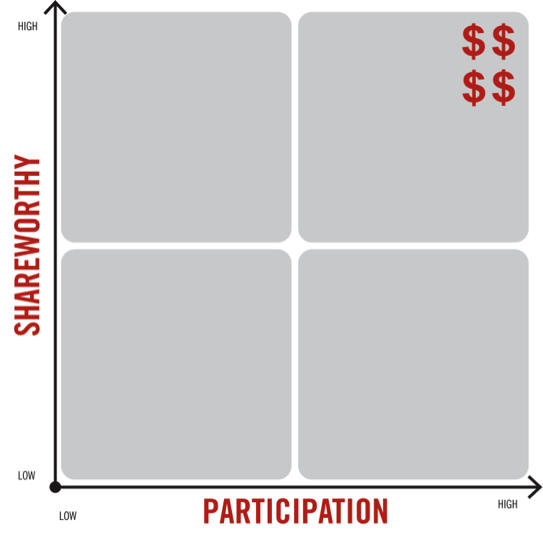 Marketing to Millennials, understanding how they use the web and reaching them in ways that compel action is a challenge that brands everywhere face. And it’s something I call “the Participation Economy.”
Marketing to Millennials, understanding how they use the web and reaching them in ways that compel action is a challenge that brands everywhere face. And it’s something I call “the Participation Economy.”
Who Are Millennials, Anyway?
Millennials are individuals born between 1977 to 2000, though the definition will likely change depending on who you ask. In the U.S. alone, the Millennial generation is some 80 million strong. They make up a whopping 21 percent of consumer discretionary spending — and that percentage is poised to increase as the group matures and fully enters the workforce.
Without question, Millennials are redefining brand marketing. For example, Millennials don’t just want to buy your brand, they want to be a part of it. They want to be active participants. And that’s where the term “The Participation Economy” comes in. In order to be successful selling goods and services to Millennials, marketers need to embrace The Participation Economy, which requires a new definition of brand value.
The New Definition of Brand Value
Marketers used to be able to focus solely on functional and emotional benefits when marketing products and services but, especially with Millennails, that old definition of brand value is no longer valid. Functional and emotional benefits alone won’t get the job done anymore.
The formula for success has changed. In The Participation Economy, the new formula for successfully marketing a brand’s products or services is: (Emotional Benefits + Function Benefits + Participative Benefits)/Price = Brand Value.
And as you’ll notice, it’s imperative that brands now include participative benefits in the equation. This is absolutely vital in order to tap into Millennial passion and compel them to action.
Let’s Deconstruct Participation
So what is “Participation,” anyway? It’s driven by advancements in digital and mobile technology, which not only allows Millennials to be a part of the equation, it’s something they expect and likely demand. The type of participation Millennials want to engage in breaks into three types:
- Millennials want to co-create the products and services that you sell,
- Millennials want to co-create the customer journey or the customer experience, and
- Millennials want to co-create the marketing, which goes well beyond social media.
Deconstructing Shareworthy
“Shareworthiness” is a common term in today’s noisy marketplace, dominated by the Web and social networks. Shareworthiness is a key component of success when marketing to Millennials and is rooted in Millennials’ strong desire for peer affirmation. According to research from “American Millennials: Deciphering the Enigma Generation,” 70 percent of Millennials say they are more excited about decisions they’ve made when their friends agree with them.
Common roads to shareworthiness include purpose and disruption. Is your idea causing people to stop what they’re doing, pay attention and engage with your brand? Some good examples of brands doing this well today include Tom’s, Warby Parker, Dollar Shave Club and most recently, Taco Bell and what’s been dubbed the “Beefy Crunch Movement,” with fans banding together to rally the brand to bring back a favorite menu item (and the brand acquiescing).
Marketing to Millennials
If marketing to Millennials is something that’s of interest to you, I explore these concepts and more, including examples from brands that are getting it right, in my new book, Marketing to Millennials: Reach the Largest and Most Influential Generation of Consumers Ever. Co-authored with Christie Garton, the book will be available in bookstores in a few weeks and can be ordered on Amazon now.
 Jeff Fromm is an EVP at Barkley, the largest 100% employee-owned advertising agency in the U.S., and co-author of Marketing to Millennials: Reach the Largest and Most Influential Generation of Consumers Ever. Jeff is the founder of Share.Like.Buy, a Millennial Insights & Marketing Conference and the lead editor of Millennial Marketing, a blog focused solely on the topic of Millennials.
Jeff Fromm is an EVP at Barkley, the largest 100% employee-owned advertising agency in the U.S., and co-author of Marketing to Millennials: Reach the Largest and Most Influential Generation of Consumers Ever. Jeff is the founder of Share.Like.Buy, a Millennial Insights & Marketing Conference and the lead editor of Millennial Marketing, a blog focused solely on the topic of Millennials.
Image: fontplaydotcom via Compfight cc

